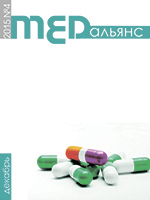Abstract
The review presents data on genetic determinants and virulence factors of potentially pathogenic nontuberculous mycobacteria (NTM) in comparison with the virulence of Mycobacterium tuberculosis (Mtb). The purpose of the review - on the example of some basic species of potentially pathogenic NTM show genetic determinants and virulence factors, which are common with Mycobacterium tuberculosis (Mtb), and show particularity of virulence profile of mycobacteriosis agent. We submitted some basic methods of determining the virulence of the НТМ. It is shown that for the manifestation of virulence NTM as well as Mtb are the most important two phenomena - 1) an adaptation of the pathogen to the conditions of the host; 2) toxic and necrotic lesions (aggression) which caused by Mycobacterium at the molecular, cellular, organ and organism levels. Similar virulence factors are a cell wall components, such as lipoarabinomannan, glycopeptidolipids, phthiocerol dimycocerosate, secretion system of type VII (ESX), and genes encoding one of the major protein virulence factors - ESAT-6. The main distinctions of NTM virulence factors are the exotoxin (mycolactone) production and the presence of plasmids associated with virulence. In addition, the morphologyof the colonies have certain relation with the virulence of NTM, in recent years it is believed that rough colony are more virulent. For the virulence of M. avium complex which is a principal pathogen of mycobacteriosis is typical the linkage with belonging to a particular serotype, it was found that serovars 4 and 8 are more virulent. Since NTM have a natural resistance to many antimycobacterial agents, a new paradigm (as well as the Mtb), is to use different virulence factors, such as exotoxin mycolactone, secretory system Esx-1 and some other as targets for creation of new drugs.

